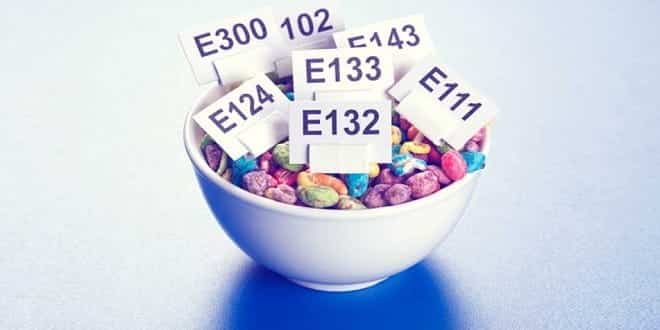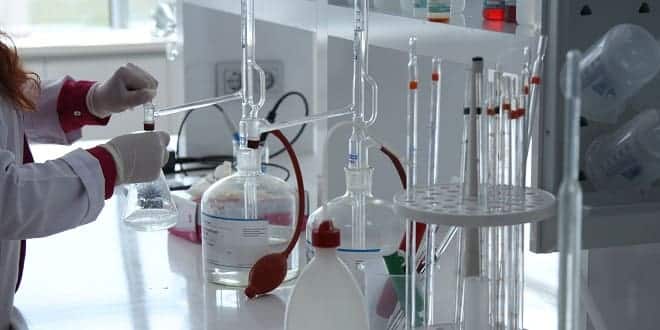EDTA Titrations v2
-
EDTA Titrations
-
Chelation in Biochemistry
-
Metal-Chelate Complexes
-
Metals are Lewis acids that accept electron pairs from donating ligands that act as Lewis bases
–CN- is a common monodentate ligand, binding to a metal ion through one atom (C)
–Metals can bind to multiple ligands (usually 6)
-
A ligand that can attach to a metal by more than one atom is multidentate or a chelating ligand
-
Chelating agents can be used for titration of metals to form complex ions (complexometric titration)
-
Chelating Agents in Analytical Chemistry
-
Ethylenediamenetetraacetic acid (EDTA)
-
Acid/Base Properties of EDTA
-
EDTA is a hexaprotic system (H6Y2+) with 4 carboxylic acids and 2 ammoniums:
-
We usually express the equilibrium for the formation of complex ion in terms of the Y4- form (all six protons dissociated). You should not take this to mean that only the Y4- form reacts
-
Fraction of EDTA in Y4- Form
-
Similar to acids and bases, we can define fractional compositions, α, defined as the fraction of “free” EDTA in a particular form.
–“Free” means uncomplexed EDTA
–So, for Y4-:
-
EDTA Complexes
-
The equilibrium constant for a reaction of metal with EDTA is called the formation constant, Kf, or the stability constant:
-
Again, Kf could have been defined for any form of EDTA, it should not be understood that only the Y4- reacts to form complex ion.
-
pH Dependence of αY4-
-
Formation Constants for M-EDTA Complexes
-
Some Metals Form 7 or 8 Coordinate Complexes
-
Conditional Formation Constant
-
We saw from the fraction plot that most of the EDTA is not in the form of Y4- below a pH ~10.
-
We can derive a more useful equilibrium equation by rearranging the fraction relationship:
-
If we fix the pH of the titration with a buffer, then αY4- is a constant that can be combined with Kf
-
Example
-
Calculate the concentration of free Ca2+ in a solution of 0.10 M CaY2- at pH 10 and pH 6. Kf for CaY2- is 4.9×1010 (Table 13-2)
-
At low pH, the metal-complex is less stable
-
Calcium/EDTA Titration Curve
-
Generic Titration Curve
-
Before the Equivalence Point
-
What’s pCa2+ when we have added 5.0 mL of EDTA?
-
At the Equivalence Point
-
What’s pCa2+ when we have added 25.0 mL of EDTA?
–At the equivalence point almost all the metal is in the form CaY2-
–Free Calcium is small and can be found w/ algebra
-
After the Equivalence Point
-
What’s pCa2+ when we have added 26.0 mL of EDTA?
–We have 1.0 mL excess EDTA
-
Auxiliary Complexing Agents
-
In aqueous solution, metal-hydroxide complexes or precipitates can form, especially at alkaline pH
-
We often have to use an auxiliary complexing agent
–This is a ligand that binds strongly enough to the metal to prevent hydroxide precipitation, but weak enough to be displaced by EDTA
-
Ammonia is a common auxiliary complex for transition metals like zinc
-
Metal Ion Indicators
-
To detect the end point of EDTA titrations, we usually use a metal ion indicator or an ion-selective electrode (Ch. 15)
-
Metal ion indicators change color when the metal ion is bound to EDTA:
–Eriochrome black T is an organic ion
-
The indicator must bind less strongly than EDTA
-
Metal Ion Indicator Compounds
-
EDTA Titration Techniques
-
Direct titration: analyte is titrated with standard EDTA with solution buffered at a pH where Kf’ is large
-
Back titration: known excess of EDTA is added to analyte. Excess EDTA is titrated with 2nd metal ion.
-
EDTA Titration Techniques (2)
-
Displacement titration: For metals without a good indicator ion, the analyte can be treated with excess Mg(EDTA)2-. The analyte displaces Mg, and than Mg can be titrated with standard EDTA
-
Indirect titration: Anions can be analyzed by precipitation with excess metal ion and then titration of the metal in the dissolved precipitate with EDTA.
-
Example Titration
-
25.0 mL of an unknown Ni2+ solution was treated with 25.00 mL of 0.05283 M Na2EDTA. The pH of the solution was buffered to 5.5 and than back-titrated with 17.61 mL of 0.02299 M Zn2+. What was the unknown Ni2+ M?
…




